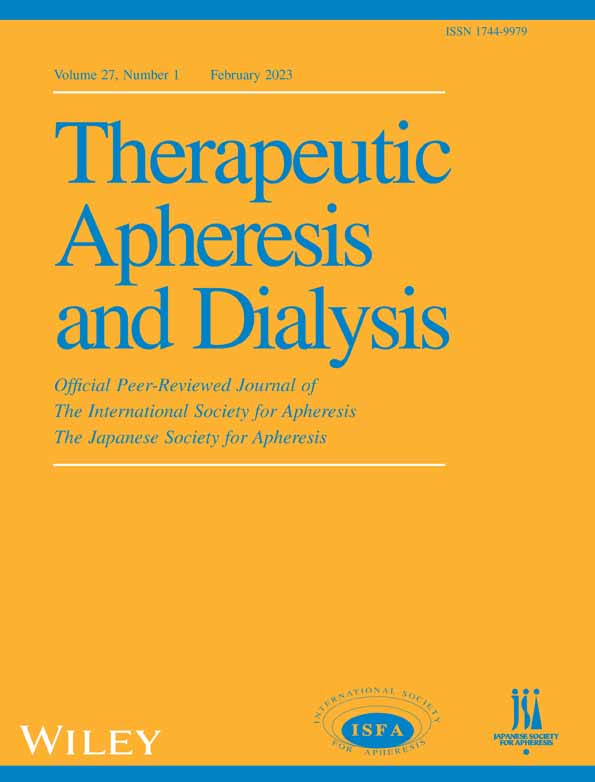Clinical parameters of therapeutic apheresis induction in clinically amyopathic dermatomyositis patients with rapid progressive interstitial lung disease
Abstract
Introduction
The purpose of this study is to clarify the clinical parameters of therapeutic apheresis (TA) induction in clinically amyopathic dermatomyositis patients with rapid progressive interstitial lung disease.
Methods
Literature publications prior to November 2021 from PubMed and Ichushi-Web were used. We collected details of TA and clinical features. The data were divided into two groups determined by the outcome, survived and deceased. Then, we estimated clinical parameters between them.
Results
There were 151 cases, 134 of which had reported outcomes and 64 of which were positive for the anti-MDA5 antibody. Eighty patients survived. Forty-eight patients were treated with plasma exchange and 34 with polymyxin-B immobilized fibers direct hemoperfusion. Regarding clinical parameters, only the PaO2 to FiO2 (P/F) ratio was useful. The cut-off point of the P/F ratio was 174 on the ROC curve.
Conclusion
The parameter for induction is considered when the P/F ratio is lower than 200.
CONFLICT OF INTEREST
The authors declare that there are no conflict of interest.




